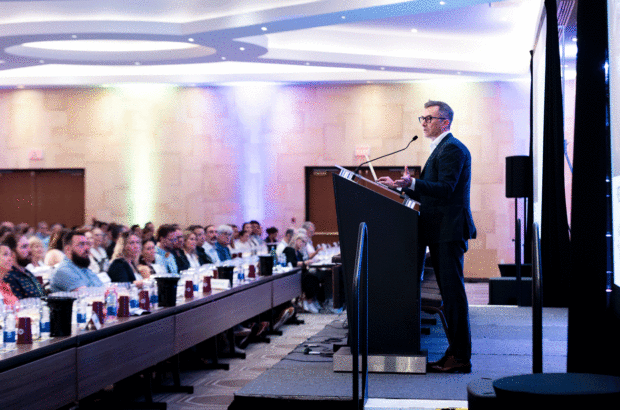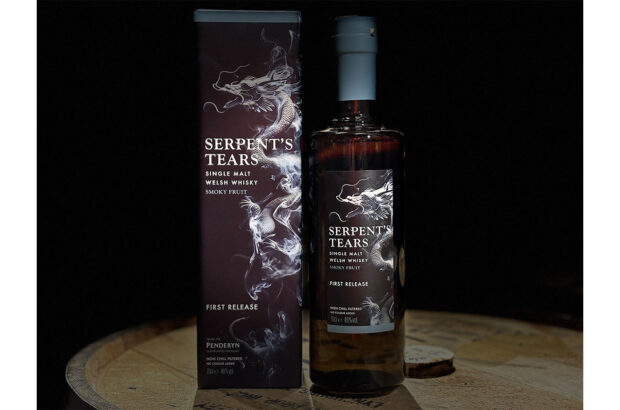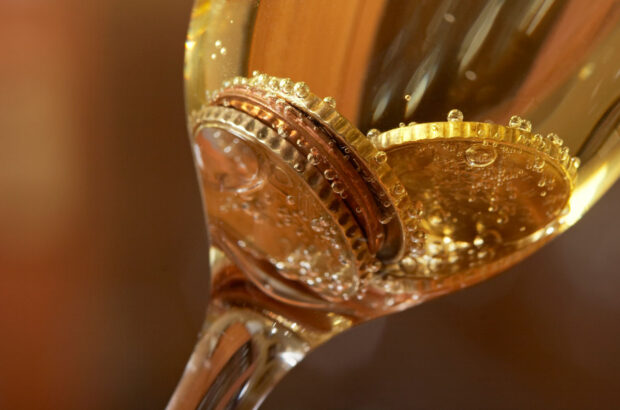Not only is Lubéron one of France’s most picturesque regions, it is also home to wines that capture the diverse fragrances, irresistible charm, and inviting warmth of Provence. Norm Roby meets some of the area’s most impressive producers
In the grand scheme of France’s viticultural history, the Côtes du Lubéron has played a relatively minor role. Located in the southeastern corner of the Rhône Valley, the Côtes drifted along as a VDQS from 1951 until it was elevated to AC status in 1988. But when word trickled out about Lubéron’s impending AC, its wine scene underwent some dramatic changes.
Though cooperatives still dominate production, their number is shrinking, while the amount of small, privately owned wineries has increased from 17 in 1984 to over 40 today. Over the same period, vineyards have doubled in size. The number of négociants offering a Côtes du Lubéron has been increasing steadily. And encouragingly, for now at least, many of the finer red and white wines are priced to please the frugal-minded Rhône wine lover.
One comes away from the region with a sense that its fortunes are being revived and reshaped by a dozen or so artisan winemakers. Among the family-owned newcomers are several high-profile, high-energy people determined to make a name for themselves.
Lubéron’s image began to improve in 1989. That year, film producer Yves Rousset-Rouard bought a nearby farmhouse complete with 8ha (hectares) of vines. Now covering 45ha, Domaine de la Citadelle is arguably the Côtes’ standout producer of red wines.
François Faverot de Kerbrech’s Domaine Faverot typifies the new artisan approach. He and his wife Sally were attracted to the Lubéron by a love of Rhône wines and Rhône varieties: ‘We saw Lubéron as a region where high-quality wine could be produced and where the full potential had yet to be achieved,’ says Faverot de Kerbrech. ‘We are now working hard to make sure people no longer think of Lubéron as cheap plonk purchased by tourists on their way to holiday in Cannes.’
Even after enduring the miserably wet season of 2002 and the infernally hot year that followed, winemakers in mountainous Lubéron remain upbeat. Several winemakers declassified or distilled some of their 2002 wines rather than risk tarnishing their reputation. Despite a 30–40% crop loss and the death of some new vineyards, the 2003 reds and whites are showing well from the barrel and tanks. The 2001 reds and 2003 whites now on the market are a mixed bag. But the overall quality demonstrates just how far Lubéron wines have come since 1988.
Compared with other relative newcomers such as producers in the Côtes de Ventoux and Coteaux du Tricastin, winemakers in the Côtes du Lubéron enjoy several advantages. Firstly, the appellation falls within a gigantic National Park and tourists flock here by the thousands to enjoy the gorgeous scenery. Secondly, the Lubéron was the setting for Peter Mayle’s book-turned-TV series A Year in Provence. Off the back of such publicity, Lubéron’s charming villages (Menerbes, La Coste, Bonnieux, Roussillon…) have become high-profile destinations within France. Among the well-heeled international set, Lubéron has become a fashionable place to set up summer residency. The restaurant scene has come to life through the revival of local cuisine and wines.
RHONE WITH A TWIST
With Syrah and Grenache topping the list in terms of quantity, the typical old Lubéron vineyards contained an unusually wide range of varieties. There are many 50-year-old or older Carignan and Grenache vines scattered about. And there are a few varieties that stray from the Rhône Valley norm. Among the reds, Pinot Noir and Gamay are permitted but cannot be replanted. There is also some Picpoul Noir. Cinsault, falling out of fashion for red wines elsewhere, is readily available and favoured for rosé wines. The rarely seen Counoise can be found in several surprisingly beautiful reds, but is not being replanted.
Ugni Blanc is the most widely planted white. AC laws stipulate no more than 50% can be used in a white blend, and Grenache Blanc is the next most popular ingredient. Among white varieties, one can find a smattering of unusual or ancient grapes such as Vermentino (Rolle), Bourboulenc, and Clairette Blanche, all of which often make their way into the Ugni Blanc cuvées. More recent plantings such as Roussanne and Marsanne are expanding their reach. And although Chardonnay, Merlot and Cabernet have been planted for vin de pays, there is a future commitment to the primary Rhône varieties for AC wines.
For now, it is not unusual to encounter Lubéron whites based on Grenache Blanc and Ugni Blanc and spiced with a dollop of Vermentino, Clairette, or even the rare Grenache Gris. About 12% of the total AC production is white and, given the varietal mix, Lubéron whites offer a delightful range of flavours. In the early 1980s, when the Perrin family of Château Beaucastel was searching for a new source of white grapes for its Vieille Ferme label, Lubéron’s Grenache Blanc, Bourboulenc and Ugni Blanc were the clear choice. Today’s leading white wine producers to check out are Laurus, La Canorgue, Château de Clapier, Domaine Faverot, Domaine de Mayol, Val Joanis, Grande Toque, Vieille Ferme, and Château de Mille (Blanc de Blancs).
All AC Côtes du Lubéron reds must be made from at least 60% Syrah and Grenache and neither Carignan nor Cinsault can exceed 20% in any cuvee. But these regulations still allow for a wide variation in style. Lubéron’s climate is cooler than other Southern Rhône regions. As Laure Gilles of Château de l’Isolette notes, ‘In the Lubéron we not only have a high percentage of Syrah planted, but our vineyards are regularly refreshed by the cooling mountain air from the Alps.’ Typically, because of the wide daily temperature swings, Lubéron grapes ripen two weeks later than in Châteauneuf-du-Pape. Though Gilles’ 1995 Cuvée Aquarelle would please hedonists seeking blockbusters, she feels most young Lubéron reds, ‘offer fresh red fruits and spice and are more elegant than tannic’. Faverot de Kerbech echoes that view: ‘If you respect the terroir here, you look to produce a wine of elegance rather than power.’
As a Southern Rhône region with 2,600 sunlight hours a year that is famous for its strong drying Mistral winds, Lubéron is further distinguished by having many vineyards set along hillsides of varying elevations and aspects. Vineyards roughly divide themselves into those located along the northern or southern slopes of the Lubéron Mountain Range. In the south, the soils contain considerable sand, and along the northern slopes the soils range from extremely rocky to sandy, calcareous and loam. If, as some believe, sandy soils diminish concentration and intensity, that would explain the elegance and femininity of Lubéron reds, and Syrah-dominated cuvees.
NAMES TO LOOK FOR
The largest producer within the Lubéron by a wide margin, the Cellier de Marrenon was created in 1963 as a union of 13 local cooperatives. It is also one of the most innovative – and hi-tech – large-scale vignerons in France. The Union makes its winemaking and viticultural team available to each and every member. Amid its million case output, there are three noteworthy Côtes du Lubéron lines: Rue de France (super value red), Grand Lubéron, and Château de La Tour d’Aigues, a limited-production vin de garde that in 2001 ranks among the region’s best.
Interest among Rhône Valley négociants is also picking up. Two relative new entries into Lubéron – Laurus (from Gabriel Meffre) and Louis Bernard – made impressive 2002 wines and definitely bear watching.
Before Peter Mayle, Pierre Cardin, and Yves Rousset-Rouard moved in to invigorate the neighbourhood, Lubéron had a small group of wineries making honest wines. In Bonnieux, Château La Canorgue – a quality-minded winery with a biodynamic focus – was brought back to life in 1976 by Jean-Pierre Margan. Others have also picked up the pace over recent years, including one of the largest family-owned ventures, Val Joanis. It was purchased in 1977 by the Chancel family who restored the vineyards and cave, and developed a beautiful garden. Quality has been ratcheted up at Val Joanis with the introduction of Les Aubepines, an exotic reserve white and a Syrah-Grenache counterpart, Les Griottes.
Along the scenic route between Apt and Bonnieux, historic family-owned properties such as Château Isolette and Domaine de Mayol have come alive under the younger generation. Along the same route is Château de Mille, a magnificent 12th-century property now run by Conrad Pinatel. Pinatel is from the old school in many ways, ageing his reds for two to seven years in large 150hl oak tuns. His red wines age well, as evidenced by his lovely 1998 and silky 1995.
In Mirabeau, Château de Clapier – family owned since 1880 – is now making solid white and red wines under the owner-winemaker Thomas Montagne. Brothers Pierre and Jean Leveque of Domaine Fontenille took charge of their ancient family cellars in 1991. They are now performing miracles with minimal equipment at their ever so modest winery in Lauris.
But with many new producers just getting untracked, the best is yet to come. Located along the northern Lubéron slopes, the aforementioned Domaine Faverot was originally a silkworm farm converted into a winery in the 1920s. Its 2003 white (Rolle and Grenache Gris) and the 2001 Cuvée du Général red (primarily oak-aged Syrah) are exceptionally good.
After a long search throughout France, Belgium-born entrepreneur Bauduin Parmentier acquired and upgraded a beautiful estate along the southern slopes, Château La Dorgonne. A believer in organic cultivation and hand-harvesting, Parmentier made several beautiful 2001 wines. Out of barrel, his 2003 reds showed extremely well. He is equally pleased with the way his vines show no signs of stress after the horrible heat of 2003. ‘When vines are farmed organically, they develop deep root systems and can remain healthy under adverse conditions,’ he says proudly.
Other new names with an impressive vintage or two under their belt include Domaine d’Antonin, owned by Guillaume Gros, Château des Tourettes (Jean-Marie Guffens) Domaine de la Royère (Ann Hughes) and Domaine Ruffinato, where Christian Ruffinato made a splendid 2001 red, in part from 50-year-old Counoise.
As the word spreads and Lubéron’s finer wines reach the internatonal market, more wannabe winemakers will be looking into planting vines there. As film producer turned producer Rousset-Rouard explains, ‘I thought about going to California or South Africa to start a winery. But then I asked, why not here? There have been vines here since the Romans.’
Written by Norm Roby






